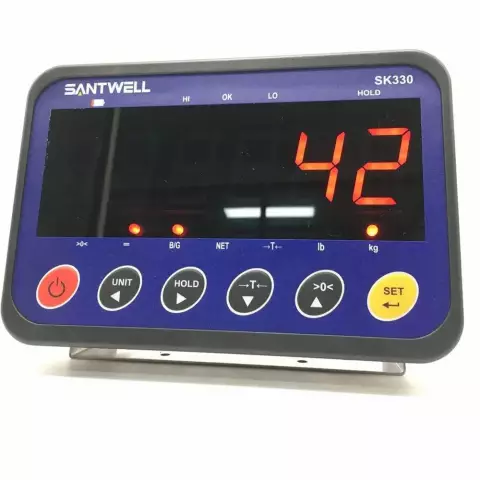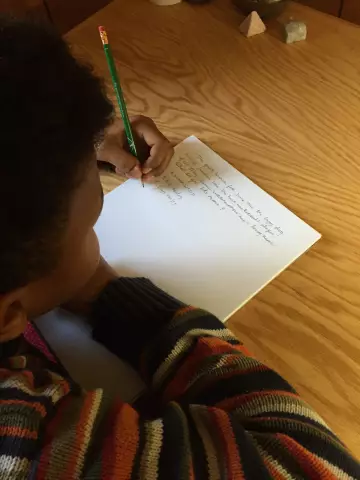- Author Rachel Wainwright [email protected].
- Public 2023-12-15 07:39.
- Last modified 2025-11-02 20:14.
Myopia
General characteristics of the disease

Nearsightedness or myopia is a common refractive error in the eye, resulting in poor visual clarity. Nearsighted people have poor vision of objects far from them. This feature of vision is often caused by an abnormal shape of the eyeball. With myopia, it has an oval shape, so the focusing of the rays does not take place on the retina itself, but in front of it, and the image is blurry.
Stretching the eyeball with myopia leads to an even more significant deterioration in vision due to retinal dystrophy. It gradually becomes thinner and may break or peel off from injury or a fall.
Myopia is mainly a disease of the younger generation. All over the world, at least 1 billion people suffer from it, the majority of whom are schoolchildren, students and other persons under 30 years of age.
Forms, degrees, types of myopia
Myopia in children can be congenital. In this case, the child is already born with impaired refraction of the eyes and from a very early age needs correction of myopia.
The hereditary form of the disease manifests itself from 1 year to 18 years in half of children whose parents suffer from myopia.
The development of acquired myopia in children 7-16 years old is most often caused by visual work in poor conditions (with improper lighting or landing during writing, as well as with excessive passion for the computer). However, the disease in this case is also provoked by hereditary factors - a predisposition to weakness of the eye muscles and an irregular shape of the eyeball.
According to the severity of the disease, myopia can be weak (up to 3.0 diopters), medium (up to 6.0 diopters) and strong (above 6.0 diopters).
Depending on the nature of the development of the disease, stationary and progressive types of myopia are distinguished. At the first type of myopia, the patient's vision is impaired, but does not deteriorate over time. Progressive myopia in children and adults is characterized by a constant decrease in visual acuity up to several diopters per year.
Diagnosis of myopia
With myopia, there are no other obvious morphological changes in the structure of the organs of vision, except for the oval shape of the eyeball. The presence of myopia in children can be suspected by observing the child's behavior: one of the obvious symptoms of myopia is squinting, thanks to which the picture becomes clearer.
The ophthalmologist clarifies the diagnosis during an eye examination according to the Sivtsev table. In this case, the doctor can use corrective glasses. The physical and clinical refraction of the eye with myopia is checked using an ophthalmometer, refractometer and / or dioptron. For better visibility of the fundus, the patient is preliminarily performed ciploplegia - dilation of the pupil with atropine or scopalomin.
To establish the etiology of myopia, an echo-ophthalmograph is used. It allows you to calculate the sagittal axis of the eyes (the distance from the center of the retina to the visual area). The obtained results correlate with the patient's age, and only on the basis of a qualitative and quantitative assessment of refraction a diagnosis is made and treatment of myopia is planned.
Conservative treatment of myopia

The task of conservative correction of myopia is to change the abnormal refraction of the eyes without surgery, only with the help of glasses, contact or hardware techniques.
Glasses are the most traditional way to correct myopia. With the correct lens fit, you can ensure comfortable vision and reduce eye strain. Spectacle correction is one of the most common methods of treating myopia in children. However, it also has its disadvantages: inconvenience during sports, limited peripheral vision, impaired spatial perception and injury hazard.
Contact correction of myopia with lenses can be applied in day or night mode. In the second case, a corrective lens during sleep changes the curvature of the cornea and provides the effect of normal vision for the next day.
Lenses for correcting myopia are comfortable and can significantly improve vision. However, it is contraindicated to wear them during infectious diseases. Injury to the eye or infection may also result from improper wear or use of non-sterile lenses.
In the hardware treatment of myopia, glasses-massagers, correcting computer programs, ultrasonic, infrared laser and magnetic therapy, vacuum massage, and electrical stimulation are used. The course of conservative correction of myopia is compiled individually, on average for 10 days with the alternate use of up to 5 different devices.
The selection of spectacle lenses should be approached very responsibly, poor-quality optics can worsen the symptoms of myopia.
Surgical treatment of myopia
Laser vision correction is the least dangerous type of surgery for myopia. The procedure consists in changing the curvature of the cornea using a laser beam. Treatment takes place on an outpatient basis using local anesthesia. Minimally invasive laser surgery for myopia lasts up to 60 seconds. Its effect is lifelong, and after applying this technique, the patient no longer needs optical methods of vision correction - lenses or glasses.
Treatment of vision with a laser is contraindicated in case of myopia in children, during pregnancy, lactation, cataract, glaucoma, as well as with intensive progression of the disease. In this case, scleroplasty is recommended. During it, the patient is implanted with a donor sclera to prevent further stretching of the eyeball. And already the next stage in the treatment of myopia is laser vision correction.
Another type of surgery for myopia, laser coagulation is prescribed to a patient with retinal dystrophy. This technique does not improve vision, but it does prevent further retinal thinning, detachment or rupture of the retina.
Surgery for myopia with implantation of a contact lens inside the eye is carried out with contraindications for laser correction of the disease. The lens material is compatible with eye tissues and has a lifetime warranty. At the same time, the natural lens is preserved, and a permanent improvement in vision occurs 5-6 hours after the operation.
YouTube video related to the article:
The information is generalized and provided for informational purposes only. At the first sign of illness, see your doctor. Self-medication is hazardous to health!






